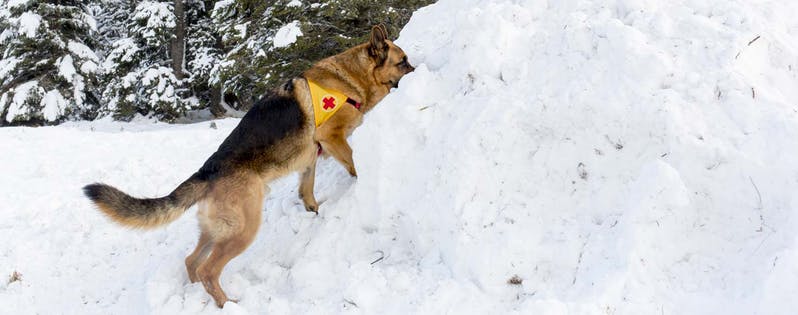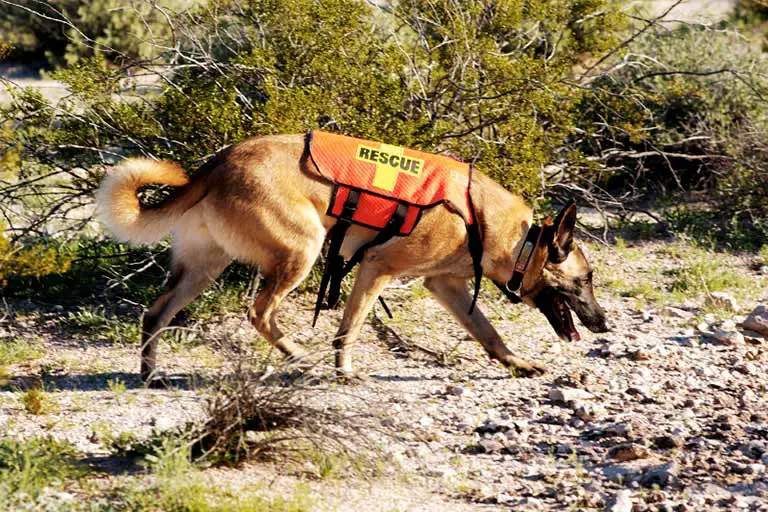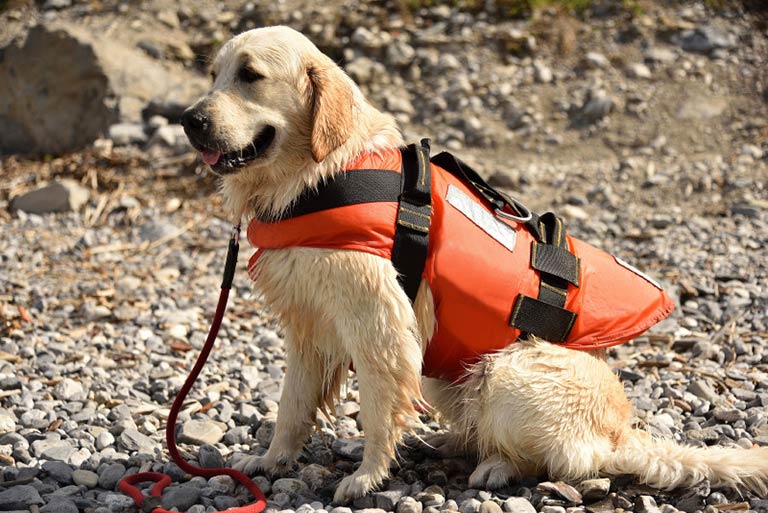Search and rescue dog training is about giving practice and trainings to your dog so that they become accustomed to search and rescue jobs. These dogs are specialized in searching and rescuing of people.
Table of Contents
What are search and rescue dogs?
Search and rescue dogs help find people who are in danger. They track people who have been lost in the wilderness or lost in a natural disaster. They also search for Alzheimer patients who have wandered alone from a care facility.
Also, as for natural disasters, they help locate people who have been trapped in an avalanche or in an earthquake.
Types of search dogs
These dogs are either air scenting dogs or tracking dogs. Air scenting dogs detect scent that is airborne and work to cover large areas of land. They detect scent from any human.
While tracking dogs are trackers meaning that they track the scent of a specific missing person after smelling parts of their cloth or an object that they touched.
They track by keeping their noses on the ground and following the trail of the missing person.

- Tracking dog: follows the track of a person without relying on scent.
- Trailing dog: Directed to find a person by following their scent.
- Air scent dog: picks up traces of human scent drifting in the air.
- Other types of rescues that air scent dog specialize in being:
- Disaster dog: Finds scents in areas affected by tornadoes, earthquakes, and other disasters.
- Cadaver dog: These are dogs that are trained only to find human remains.
- Water search dog: Dogs that are able to detect human scent either in or under the water.
- Avalanche dog: Detects human presence under the snow.
Search and Rescue Dog Training
Trailing training
Items that you will need
- Collar
- Leash
- Clicker
- Dog treats
Step one: Select a healthy dog from a breeder or rescue group
Select a dog that is small in age such as a puppy. Puppies learn faster than adult dogs. They become easily socialized. However, an adult dog can learn to become a search and rescue dog even though the process takes a longer time.
Many trainers select dogs based on their scent and tracking skills such as German Shepherds and bloodhounds.
Step two: Socialize your dog

Socialize your dog to people and surroundings. You must socialize them so they become friendly and well socialized not afraid of others and their surroundings.
Puppies are easier to socialize before they are 16 weeks old. To socialize your dog, take them to parks, houses, stores, and other locations so they can get used to being with different people.
Also you can click train your dog through clicker training. This training is used through every interaction that your dog makes where you will give them a treat for it.
Step 3: Encourage your dog to search for you
Make your dog develop positive associations with finding people by hiding in the house. Then , call your dog out through yelling their name so they will come to find you. When they find you, click the clicker and give them a treat.
Repeat this exercise for 3 to 5 times each day for several weeks.
Step four : Practice with your dog scent tracking

Get the help of another person to stay with your dog while you hide. After you hide, let the person helping you offer a piece of clothing to your dog to sniff and tell them “find”.
At first, your dog will not understand the find command but they will understand that they have to look for you because they have practiced in the previous step.
When your dog finds you, click the clicker and give them a treat. Begin with small distances and stretch them to longer distances over several weeks.
When your dog begins responding to the “find” command, practice with other people.
Step five: Repeat the exercise with other people
Repeat the find exercise with other people. Start with people your dog knows well and ask your dog to find them using the steps in step 4. Make sure to use a piece of cloth that the person wore.
Repeat several times a day for at least a month. When your dog is accustomed to finding these people, begin using strangers or people your dog does not know.
Step 6: Continue practicing the “find”
Continue practicing the “find” command every time you get a chance. Let your dog smell something and then go searching after it.
Air scent search dog training

Air scent search dog work with their nose in searching in the air. They pick up the scent in the air. These dogs are trained to not smell a scent trail or an article to work too.
These dogs don’t look for specific people in their area rather they look for anyone. Once they find a missing person, they will return to their handler and indicate that they found someone by a bark or by jumping up on them.
After that, the handler will tell the dog the “show me” command and the dog will take them to the missing person.
When the missing person is found, the handler will give the dog a treat and lots of praise.
It is through this natural training that a dog training to find the missing person is complete.
Step one: hide in a place
A person goes hide in another place while the handler stays with the dog.
Step two: the handler asks the dog a command
The handler says the command ” search” or ” go find” to the dog and releases the dog .
Step three: praise and treat the dog when they reach their target
When your dog reaches the missing person and goes back to the handler, praise them and give them treats for doing a good job.
Conclusion
In conclusion, search and rescue dog training requires following certain steps to teach your dog how to search effectively. By using positive reinforcement, you will teach your dog how to search effectively.
To know more about dog training boarding, check Top Tips on Dog Training Boarding.

